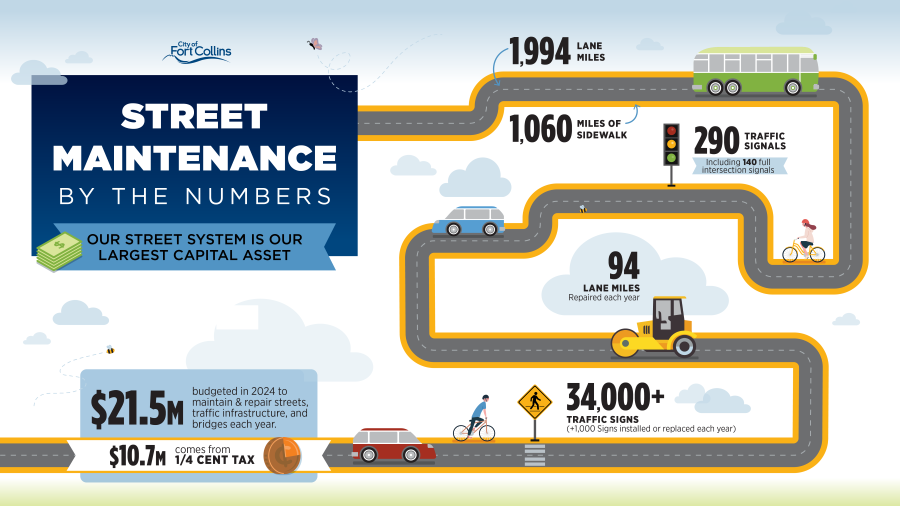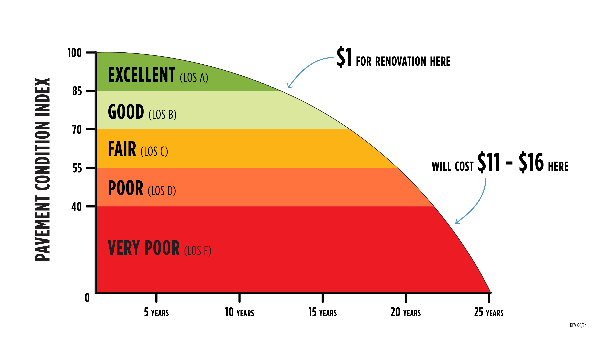Street Maintenance Program (SMP) overview#
The City’s streets and transportation system is our largest capital asset. Being able to move people and goods in a safe and efficient manner throughout the community is a critical function of local government. Maintaining this system requires continual assessment and attention year-round; streets deteriorate as they age, much like the roof and paint on your home.
The City of Fort Collins' Street Maintenance Program is a comprehensive, systematic way for the City to evaluate its street system and strategically maintain it with long-term, cost-effective maintenance and rehabilitation.
Here’s what the program maintains:

Our Street Maintenance Program maintains:
- 1994 lane miles of roadway
- 1060 miles of sidewalk
- 290 traffic signals
- More than 34,000 traffic signs
- More than 200 bridges
The program repairs an average of 94 miles of roadway each year. $21.5 million is budgeted in 2024 to maintain and repair streets, traffic infrastructure and bridges. $10.7 million of that comes from the Street Maintenance Plan 1/4 Cent Tax.

As you can see in the graphic, proactive street maintenance via our Street Maintenance Program saves our city money by addressing problem areas before road conditions significantly deteriorate. This type of intentional maintenance schedule maintains our street infrastructure in a way that’s most fiscally responsible.
Learn more about the Street Maintenance Program#
Street Maintenance Program funding (1/4-Cent Tax)#
In November 2024 Fort Collins voters approved a 20-year extension of the ¼ Cent Tax, funding our Street Maintenance Program through Dec. 31, 2045. The tax currently funds roughly $10.7 million of maintenance of the City's street system. The Fort Collins community has supported street maintenance through a dedicated ¼ cent tax since 1989.
The Street Maintenance Program maximizes the community’s investment in the street network by performing ongoing maintenance before much more costly repairs or replacement is necessary, extending the usable life of a street (see the graphic above) The program covers major and preventative maintenance which includes new asphalt, curb and gutter work, and repair of bridges, sidewalks, shoulders, and medians.
Fort Collins is responsible for over 200 bridges (major and minor), more than 1990 miles of traffic lanes, and 290 traffic signals - and our system continues to grow. The 1/4-Cent Streets Maintenance Tax ensures the reliability and functionality of the system into the future.
2024-25 Street Maintenance Program information#
View 2024 PDF Map This map shows the projects that are planned to be completed in 2024.
View 2025 PDF Map This map shows the projects that are planned to be completed in 2025- concrete repairs will typically be made the year before.
Looking for projects currently under construction?
To see current Streets construction projects, see our Construction webpage.
FCTrip Tweets! - Get updates on road construction & conditions
Follow @fortcollinsgov on Twitter or simply search #fctrip.